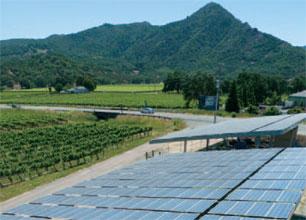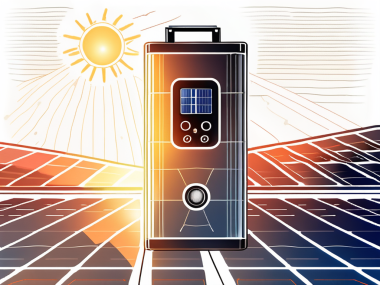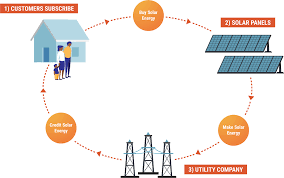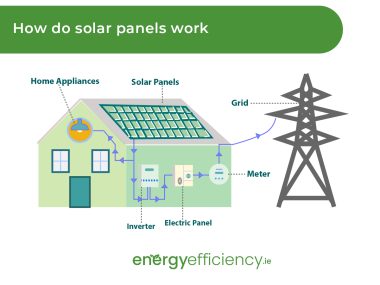- Solar energy expenses can differ based on the specific system and its components. In certain instances, the initial costs of solar energy systems may surpass those of traditional energy sources like diesel generators and power stations. However, solar energy systems typically boast lower operating and energy expenses compared to other energy sources. The cost of solar power plants is primarily influenced by construction costs, with solar cells constituting a significant portion of total expenses in photovoltaic plants. In terms of cost-effectiveness, stationary solar systems linked to the grid often present advantages over mobile systems and independent stationary systems. Solar thermal collectors, when paired with grid-connected electric boilers, can offer an economical substitute for gas boilers. Overall, solar energy costs hinge on various factors, yet it is increasingly emerging as a competitive and economically viable option for fulfilling energy requirements.
Types of solar energy:
There exist two primary categories of solar energy systems: photovoltaic (PV) and solar thermal. PV systems employ solar cells to directly convert sunlight into electricity, whereas solar thermal systems utilize mirrors or lenses to concentrate sunlight and heat a fluid that propels a turbine or engine. PV systems can be situated on rooftops, ground-mounted, or integrated into building materials such as windows or tiles. Solar thermal systems typically demand more extensive space and are commonly deployed in areas like deserts or fields. Both varieties of systems can either be linked to the grid or function autonomously with the aid of batteries or generators.
Cost of solar energy
The price of solar power hinges on various factors like system size, location, design, and quality, as well as incentives, installation, and maintenance costs. While the initial investment is typically higher compared to traditional energy sources, solar energy boasts lower operational costs and a shorter payback period. According to the International Renewable Energy Agency (IRENA), from 2010 to 2019, the global average levelized cost of electricity (LCOE) from utility-scale PV systems dropped by 82%, going from 0.378 USD/kWh to 0.068 USD/kWh. Solar thermal systems also saw a 47% decrease in LCOE during the same period, from 0.312 USD/kWh to 0.165 USD/kWh.
Environmental impact of solar energy
Solar energy generally has a lesser environmental footprint compared to traditional energy sources, particularly concerning greenhouse gas emissions, air pollution, water usage, and waste production. Solar power operations don’t emit direct pollutants, and their overall carbon footprint over their lifecycle is lower than that of coal, natural gas, or nuclear energy. Moreover, solar energy contributes to reducing reliance on fossil fuels, thereby enhancing energy security and diversification.
However, solar energy isn’t without its drawbacks. It can lead to land use changes, habitat disruption, resource extraction, manufacturing emissions, transportation impacts, and disposal challenges. These adverse effects can be addressed through sustainable approaches like material recycling, reuse, or repurposing, as well as minimizing land disturbances and biodiversity impacts.
How does the cost of solar power compare to other forms of energy generation?
The expense of solar energy has steadily decreased in recent decades, rendering it more competitive against other energy sources. In numerous areas, solar power stands out as one of the most economical electricity options. Several factors contribute to this trend:
Decreasing Costs:
The price of solar panels has dropped significantly due to technological advancements, enhanced production efficiency, and economies of scale. Moreover, installation and maintenance expenses have also seen reductions.
Government Incentives:
Many governments provide incentives, tax breaks, and subsidies to encourage the adoption of solar energy. These measures can substantially lower the initial cost of installing solar panels, making solar power more accessible to consumers and businesses.
Absence of Fuel Costs:
Unlike fossil fuels like coal, natural gas, and oil, solar power harnesses sunlight, an abundant and free resource. Once solar panels are in place, ongoing operational expenses are minimal, primarily consisting of maintenance and occasional repairs.
Environmental Advantages:
Solar power is clean and renewable, resulting in minimal greenhouse gas emissions and reducing reliance on fossil fuels. As concerns about climate change and environmental sustainability mount, the appeal of solar energy grows.
Technological Advancements:
Continuous research and development in the solar industry lead to improved efficiency, reliability, and storage capabilities, further driving down costs and enhancing the competitiveness of solar power.
- In summary, although the initial investment in solar energy systems can be substantial, the long-term savings and environmental benefits often outweigh the upfront costs. Consequently, solar power has become increasingly appealing compared to traditional energy generation methods like coal, natural gas, and nuclear power.










